
KIA EV9 vs VW ID. BUZZ vs VOLVO EX90 vs PEUGEOT E-5008
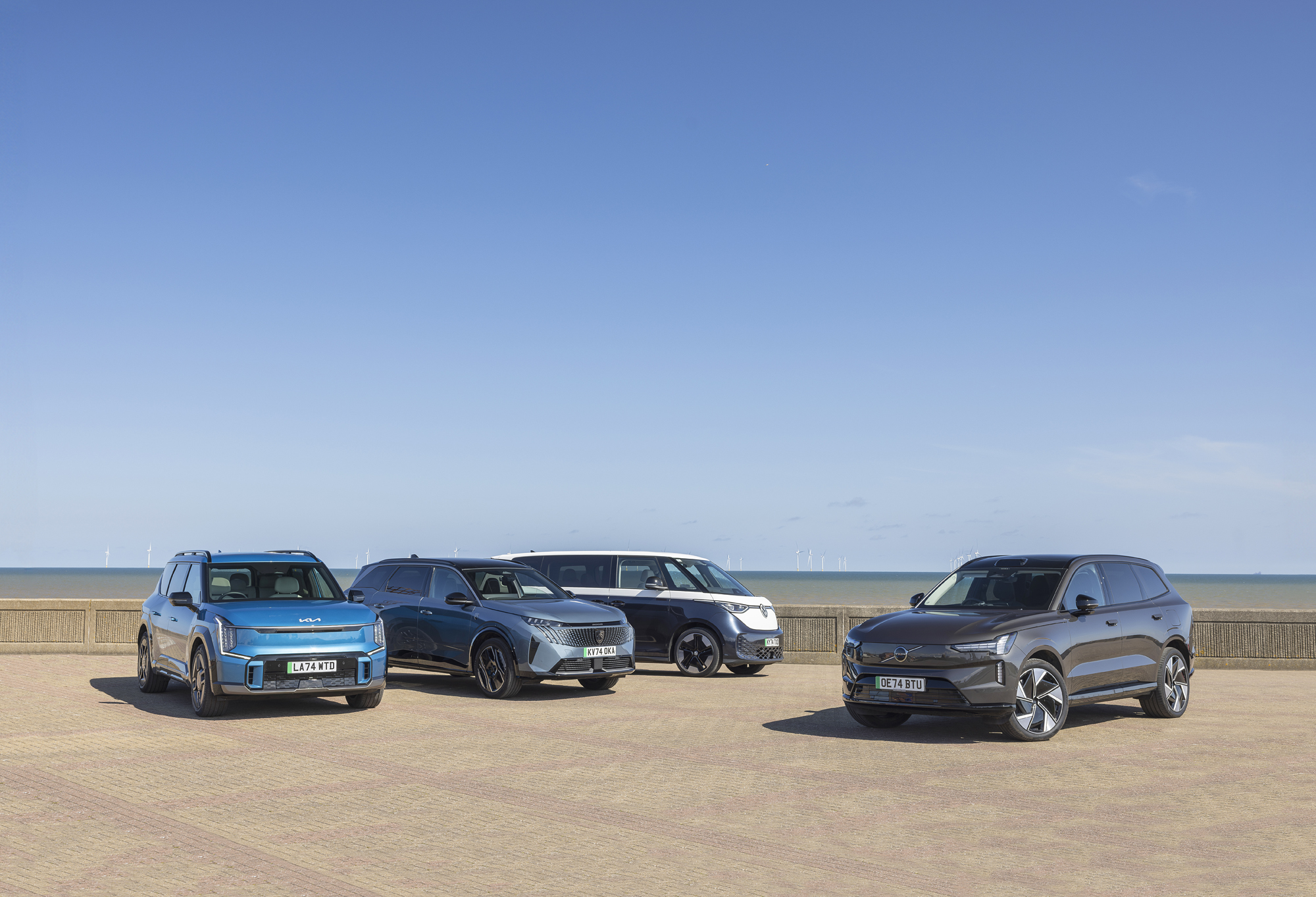
WHICH IS THE BEST: ELECTRIC SEVEN-SEATER?
Forget the Tesla Model X. Now there’s a great choice of electric seven-seaters you don’t need to feel embarrassed about
It’s really not long ago that electric seven-seaters seemed to be one of those categories that didn’t really exist. There were a few to choose from, but most of them were very odd, or not very good, or some combination of the two.
Look no further than the Tesla Model X, which in many ways was very good, but looked mighty odd and said some peculiar things about the owners and their self image – ‘Yes! I can fly! To Mars!’… and that was before Elon’s extracurricular activities added an extra layer of peculiar.
And the Mercs were odd. The GLB seemed to be clamouring for an award for Smallest EV That Can In Theory Carry Seven People But They Won’t Thank You For It, while the EQS SUV was so un-Mercedes-like in so many ways that you wondered if there was meant to be a punchline attached to it.
And there were van-based things, and in some territories the Model Y was available with seven seats, but the point is that there was no default choice, no obvious answer to the perfectly sensible question: What electric seven-seater should I buy?
‘The general idea is very much the same: tall, roomy, comfortable, refined‘
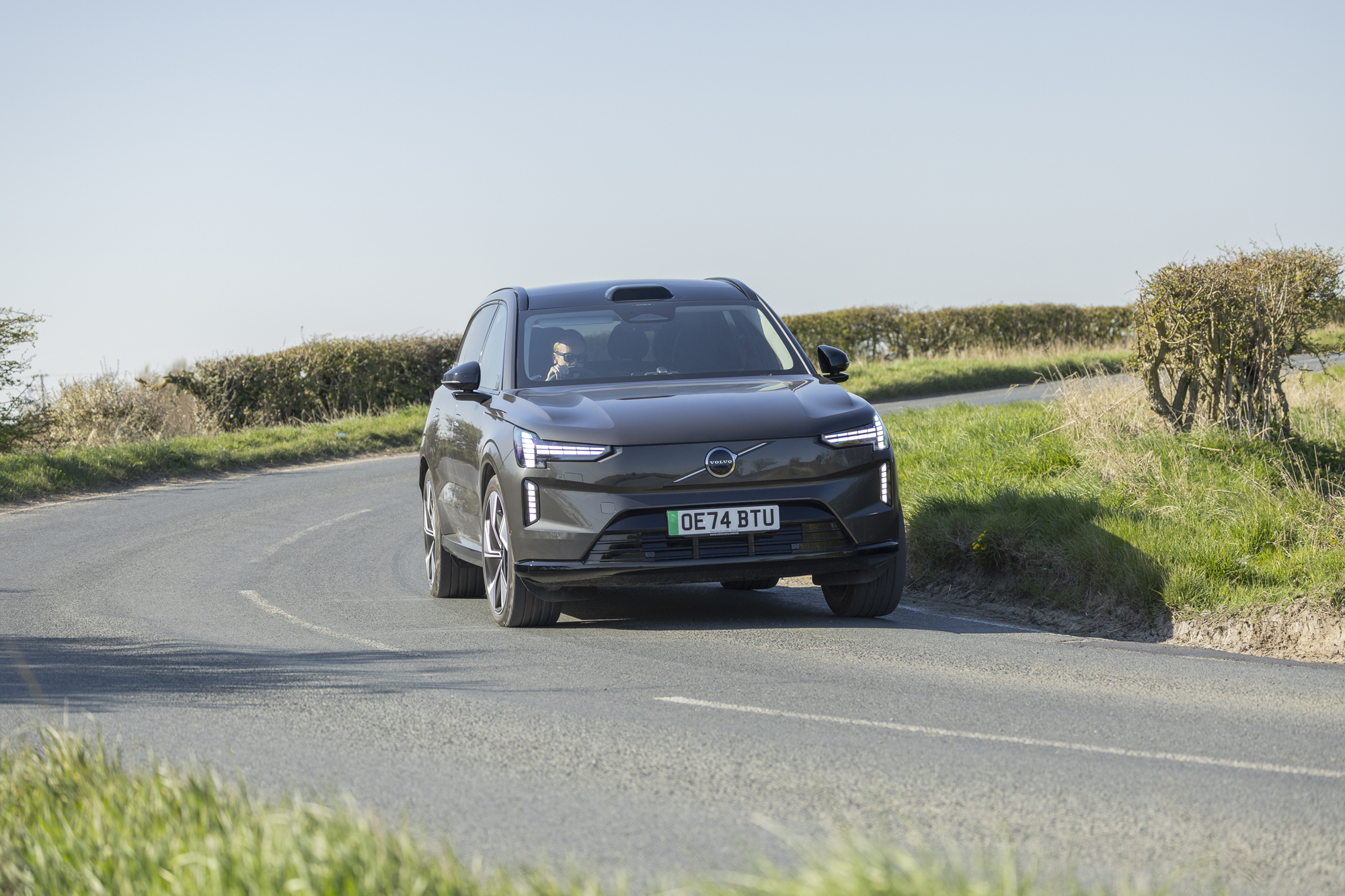
That’s changing fast. We may not yet have reached a consensus on the no-brainer obvious answer, and maybe never will, but there are now several very serious contenders.
The newest car is the Volvo. The EX90 was initially billed as the electric replacement for the hugely popular XC90, the SUV that did more than any other car to bring Volvo into the modern world and sold in huge quantities. But then some of the wind went out of the electric boom and the XC90 got a new lease of life, so XC and EX sit alongside one another in the current line-up.
The general idea is very much the same: tall, roomy, comfortable, refined. There’s a choice of three power levels – Single Motor (335bhp), Twin Motor (402bhp) or Twin Motor Performance (510bhp), which we have here. On a 250kW rapid charger, it should get from 10 to 80 per cent in 30 minutes, which corresponds with our experience.
Despite appearances, the EX90 isn’t an electric XC90. Rather, its underpinnings are derived from those of the electric Polestar 3, which is only offered in five-seat form. It’s the only Volvo currently using this platform.
‘Not excited or inspired, to be clear, but that isn’t a failing in a family-minded electric SUV’
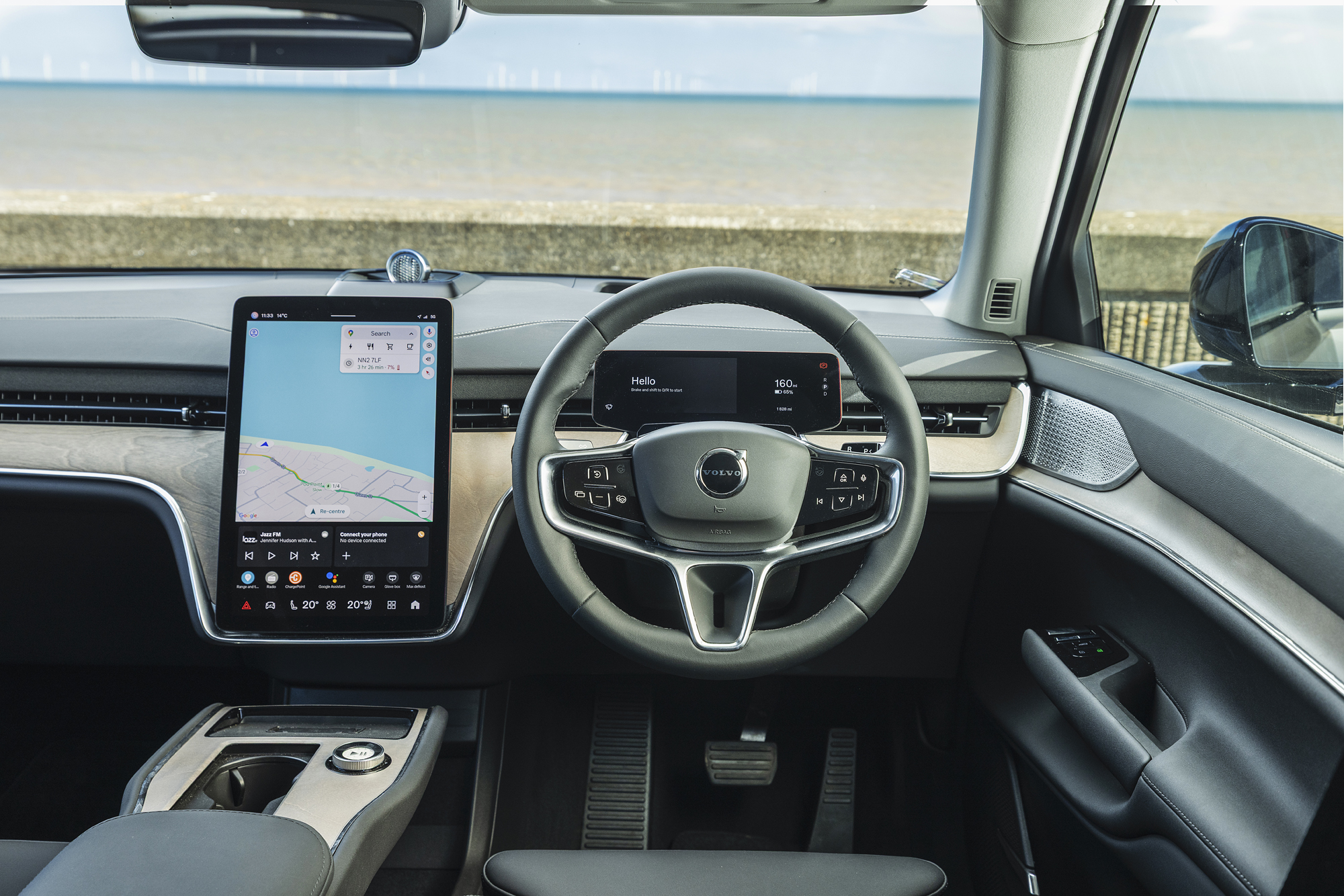
It’s a big car, the longest here. You choose from five, six or seven seats. There are two spec levels, Plus and Ultra. Both come well equipped: big central screen (14.5 inches, portrait), running Google Automotive Services (excellent voice control, native Google Maps), with a head-up display, wireless phone charging, automatic LED headlights, 360º cameras, a fixed full-length glass roof, four-zone climate control, a heat pump, and plenty more. Our Twin Motor test car is in Ultra trim, which means adaptive damping, massaging front seats and much else, including cosmetic upgrades inside and out.
The carbuncle at the top of the windscreen may look like a ‘taxi’ sign waiting to be illuminated, but in fact it houses lidar equipment that’s central to Volvo’s Pilot Assist system, which helps with the steering up to 80mph and can handle braking and accelerating without your input. In theory it can offer a higher degree of self-driving ability than this, but that’s not been activated yet.
On paper, it all adds up to a pretty swish package: modern, powerful, tech-heavy but conservative in its looks. When I arrive at our rendezvous in Withernsea, ready for some North Sea fresh air and a cheerful cuppa at the Castle Cafe, four hours after setting off on an unhurried route from Northampton, I am entirely comfortable and relaxed. Not excited or inspired, to be clear, but that isn’t a failing in a family-minded electric SUV.
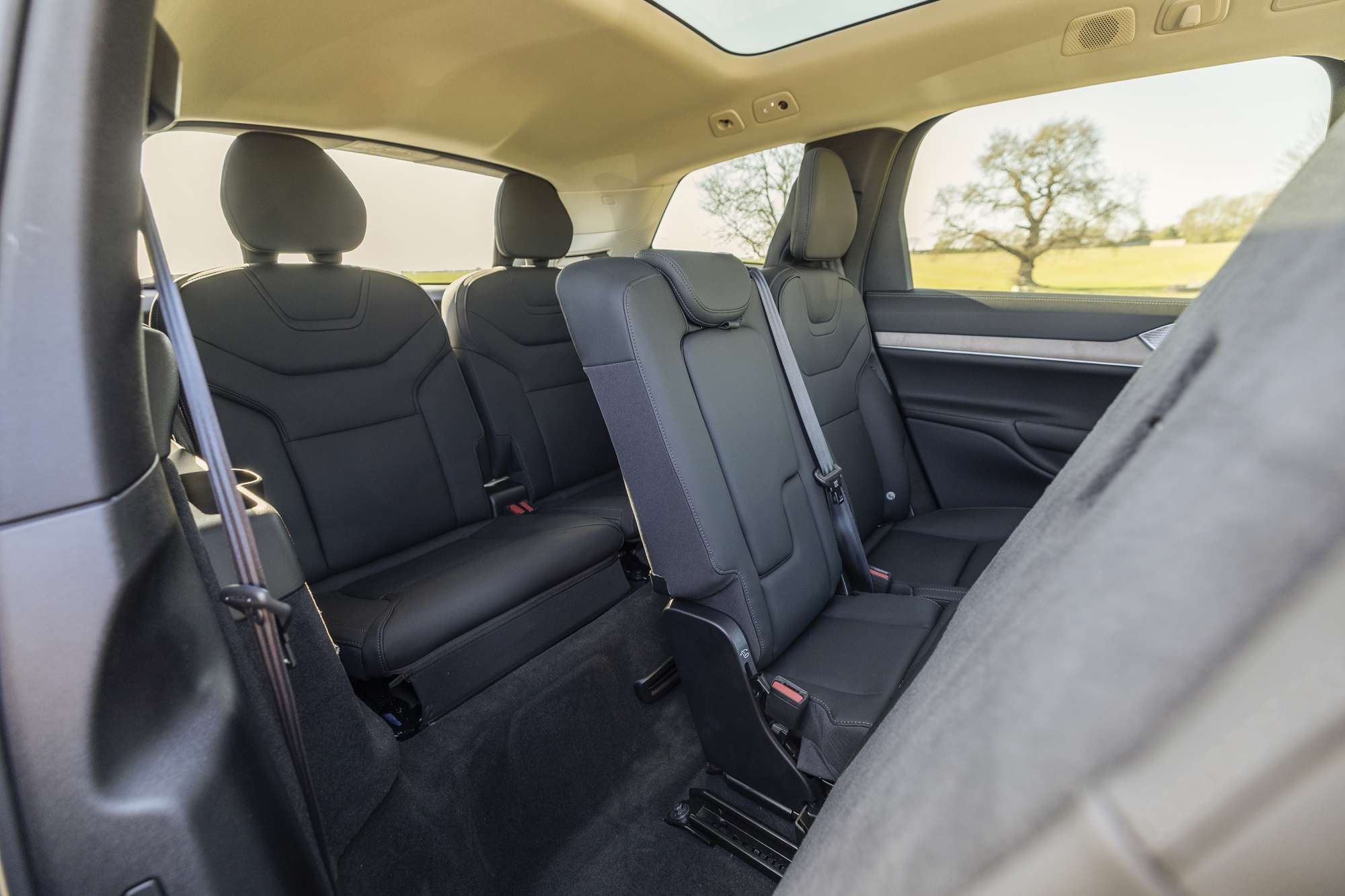
It has that classic Volvo quality of feeling perfectly happy being driven with half a body and half a mind. The steering is light, there are no gears to change and there’s no incentive to switch off the excellent Bowers & Wilkins audio (another benefit of going Ultra). The ride quality is on the soft side, though. Not an issue in a straight line, but life isn’t all about straight lines.
But, in a textbook illustration of why comparison tests are so important, driving the Volvo back to back with its rivals starts to dim my enthusiasm. And my colleagues also have their reservations about the EX.
Matt dePrez tells me: ‘I think the performance is quite impressive for such a big car but the throttle response is really poor. There’s a good second from flooring the throttle to it actually doing anything, but there’s plenty of power there when you need it. In the real world the Kia feels just as quick as the Volvo because its throttle mapping is so much better.’
And Alan Taylor-Jones is agitated by various aspects of the interior: ‘This feels like a major step down in quality, with plastic seats and cost-cutting electric window controls. Way too much is operated via the touchscreen, which is not the easiest to navigate, and it’s the only one without Android Auto.’
‘The problem is that it costs a lot of money, while failing to feel like a £96k car’
He’s not finished yet: ‘Third-row space is not what it should be for such a big premium SUV, and the rear pillars are vast.’ He’s right: all of our testers, of various shapes and sizes, find that the third row isn’t very big and isn’t very easily reached. What’s more, passengers in the second and third rows are not well provided with space under the seat ahead for their feet.
It’s not all bad. The seat adjusters are precise and good to the touch. One-pedal driving mode is intuitive and effective, especially on the motorway. From some angles it looks like a Range Rover, and the paint catches the sun rather nicely. And yes, it has a lot of equipment. The problem is that it costs a lot of money, while failing to feel like a £96k car. In isolation it’s all fine, but get into pretty much any premium German SUV priced at this level and it will feel more special than the Volvo. As indeed do at least some of today’s rivals.
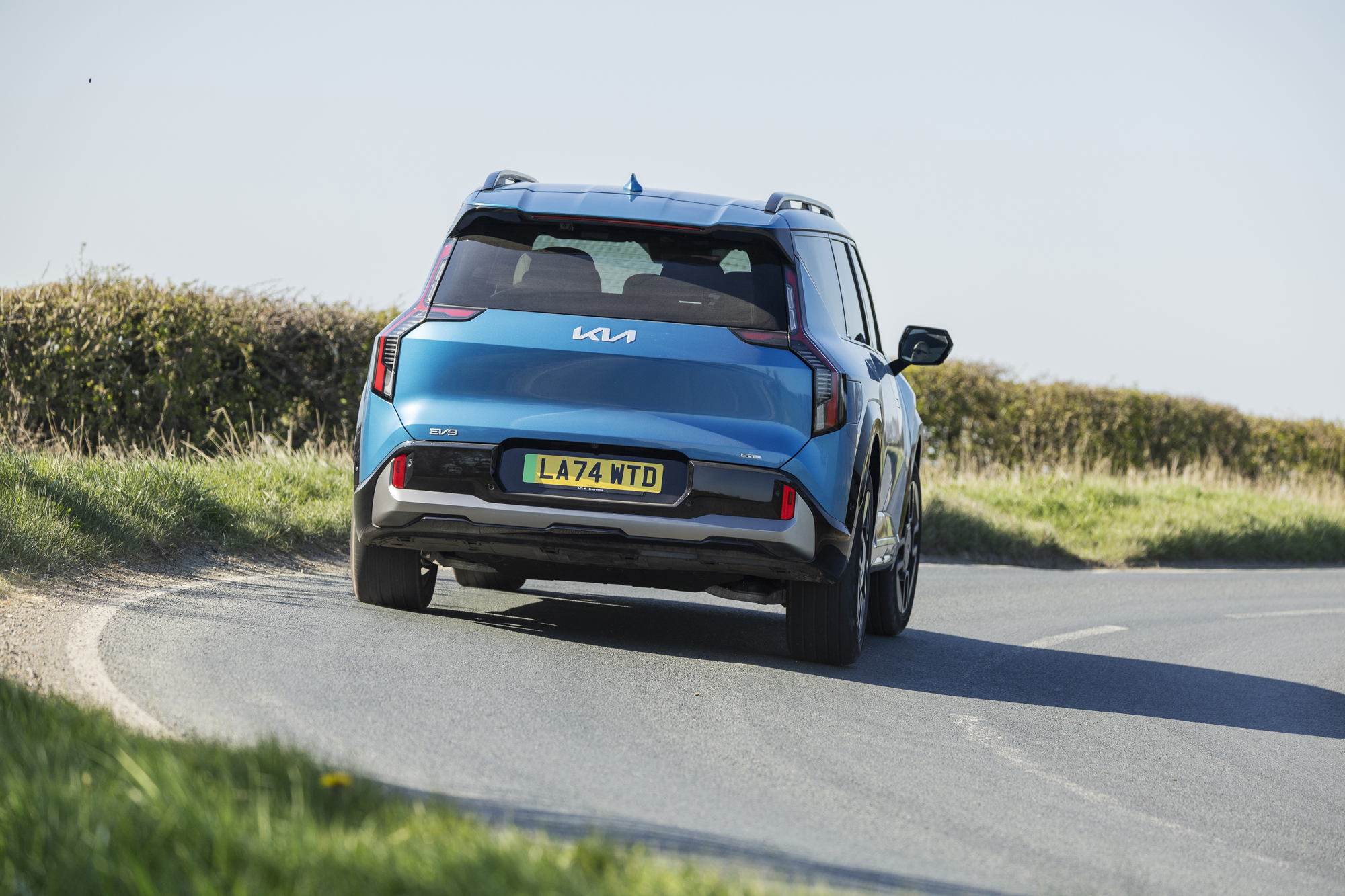
The most direct competitor to the Volvo is the Kia. The same sort of boxy SUV styling, the same striving for classiness and versatility. Similar size, too, at 5015mm long.
Entry-level Air has a single motor and rear-wheel drive. GT-Line and GT-Line S have a dual motor and all-wheel drive. GT-Line S is available as a six-seater with big swivelling chairs in the second row, or a conventional seven-seat arrangement like ours. As you go up through the trim levels you get bigger wheels, massage front seats and even more electronic safety systems. But, thankfully, the cabin doesn’t get too digital; like a lot of Kias and Hyundais, it strikes a good balance between physical buttons and on-screen control.
Tester Mal Bailey points out that the headrests are lovely to the touch – a tiny detail, yes, but one that improves the sensual quality of every single journey. Talking of details, Matt dePrez reckons the Kia-Hyundai blind-spot camera system – which shows the relevant image at the relevant time in the instrument panel – is brilliant. ‘I think the approach to infotainment and switchgear is probably the best of the bunch, although it’s not a great bunch in that regard. At least Kia has included some physical controls for temperature, volume etc, and the buttons for the heated seats and steering wheel are on the door, not in the screen.’
There’s good foot room and head room for all three rows. The air vents in the third row are excellent – effective, and well positioned so they’re not blasting you. The second row splits 60:40 and slides asymmetrically, which seems odd, especially in a car designed to be an electric seven-seater from the off. Rapid charging from 10 to 80 per cent can be done in 24 minutes. It also has a handy socket for ⊲ charging electronic equipment, or indeed other EVs. Its range is okay, at an official 313 miles and tested 267, but that’s not because it’s particularly efficient, and it’s certainly not because the Lego-alike EV9 is aerodynamically sleek – it’s because the battery’s big.
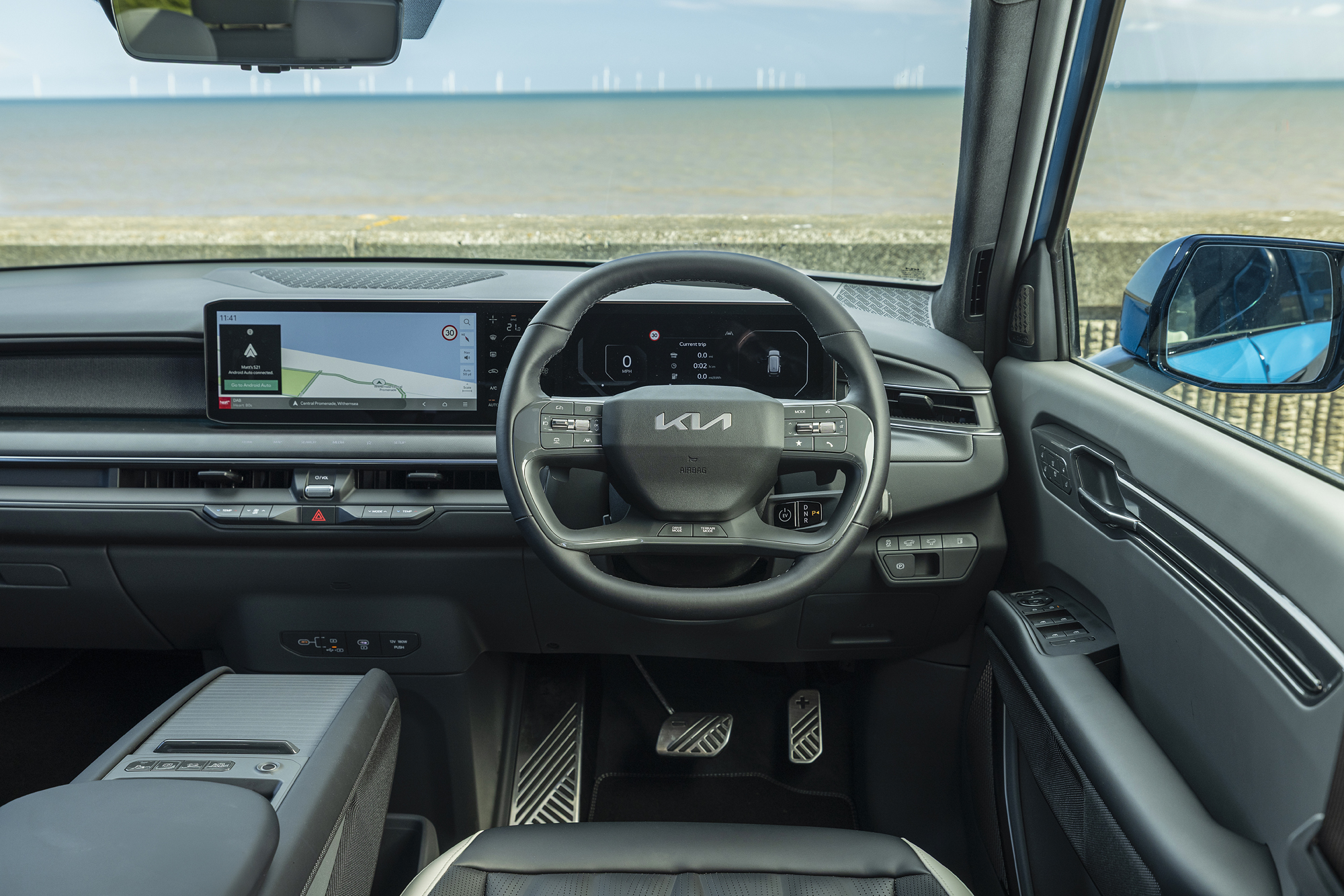
The ingredients all sound pretty standard for a fairly posh family electric car. But then you drive it and you’re quickly reminded that this is the big sibling of the EV3 and EV6, two of our favourite electric cars – favourites for a lot of reasons. It’s much bigger and heavier than those cars, of course, but has a responsiveness that makes a lot of its bulk seem to disappear. The idea is pretty conventional, but the execution is exceptional.
Personally, I regard the Kia as an eyesore. Those wheels, those wheelarches, those… everything. I really wouldn’t want it parked outside my house. In which case the related Hyundai Ioniq 9 should do the job nicely: similar, but less ugly. (Go ahead, Hyundai, the slogan’s yours if you want it.) If you can cope better than me with the looks, then the Kia is a car to be taken very seriously. It’s aiming at pretty much the same targets as the Volvo, but hitting more of them. It is, give or take, better in every way. And cheaper. Also, bear in mind that this is a twin-motor, all-wheel-drive version, when really a single-motor version would be fine, and probably still better than any version of the EX90, even in Kia’s entry Air spec.
‘I know, I know: if I drove a van every day, I wouldn’t think there was anything fun about sliding doors’
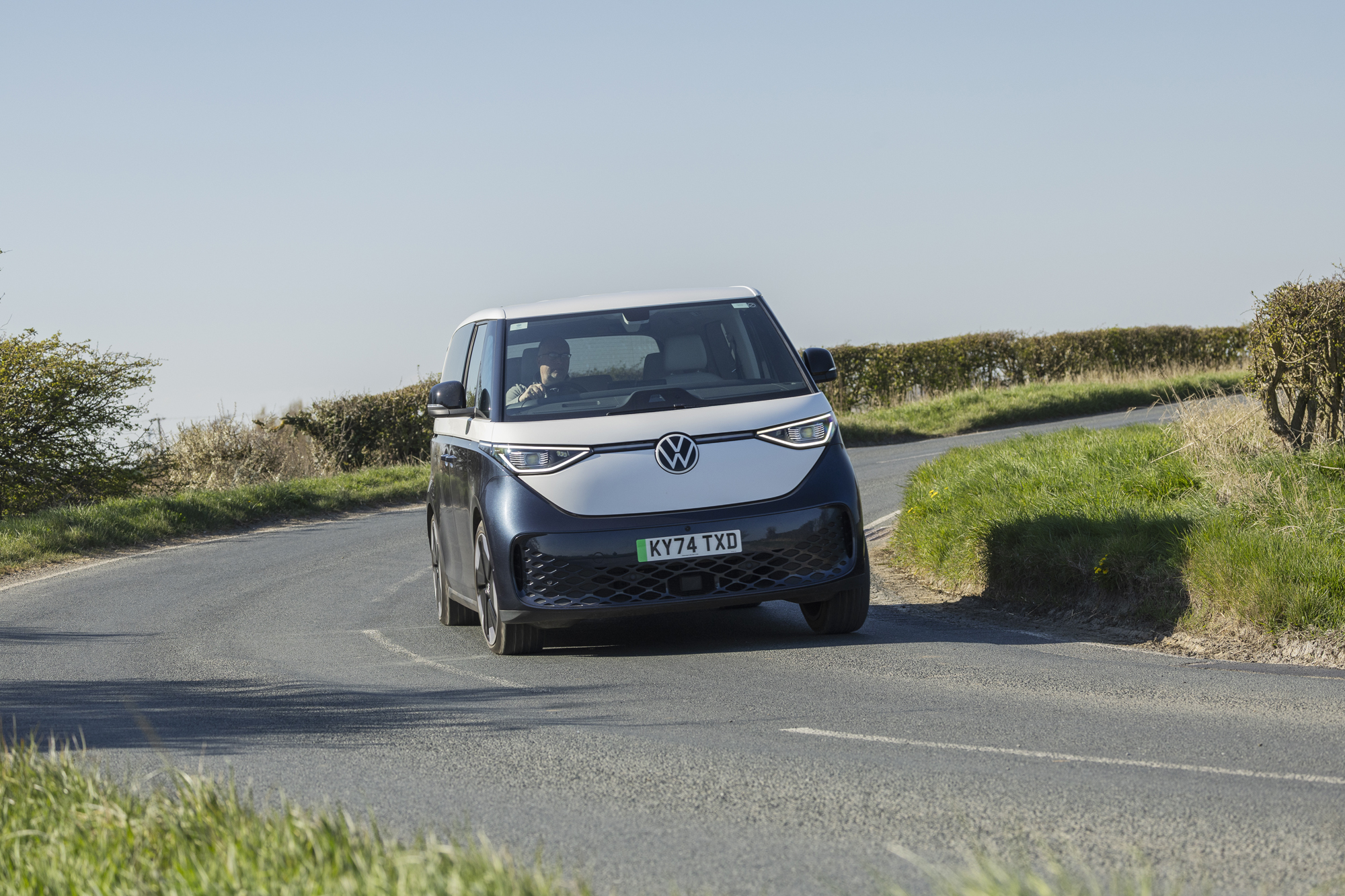
If the Kia is a superior attempt to do the same things as the Volvo in the same way, the VW is travelling a very different path to a similar destination. It makes so much more sense as a seven-seater than in its original – and still available – five-seat form. This version, with its longer wheelbase and its three rows of seats, does everything better: it’s more practical as a people carrier, more helpful when you’re trying to use it as a beach hut/cafe/lounge, and somehow more fun to drive.
Its 3239mm wheelbase is 25cm longer than the five-seater’s, but overall the Buzz doesn’t seem huge in this company, at 4962mm long. There’s a decent level of standard equipment, and a lot more available via the options list, but the main joy of the electric-only Buzz interior is its versatility. The second row slides, reclines and folds flat. The third row is removable, giving an impressively large boot space (and it’s not bad with the third row in place). Everyone gets a good view and a good amount of space for their head, arms, knees and feet. And those big sliding side doors are neighbour-friendly and fun. (I know, I know: if I drove a van every day, I wouldn’t think there was anything fun about sliding doors.)
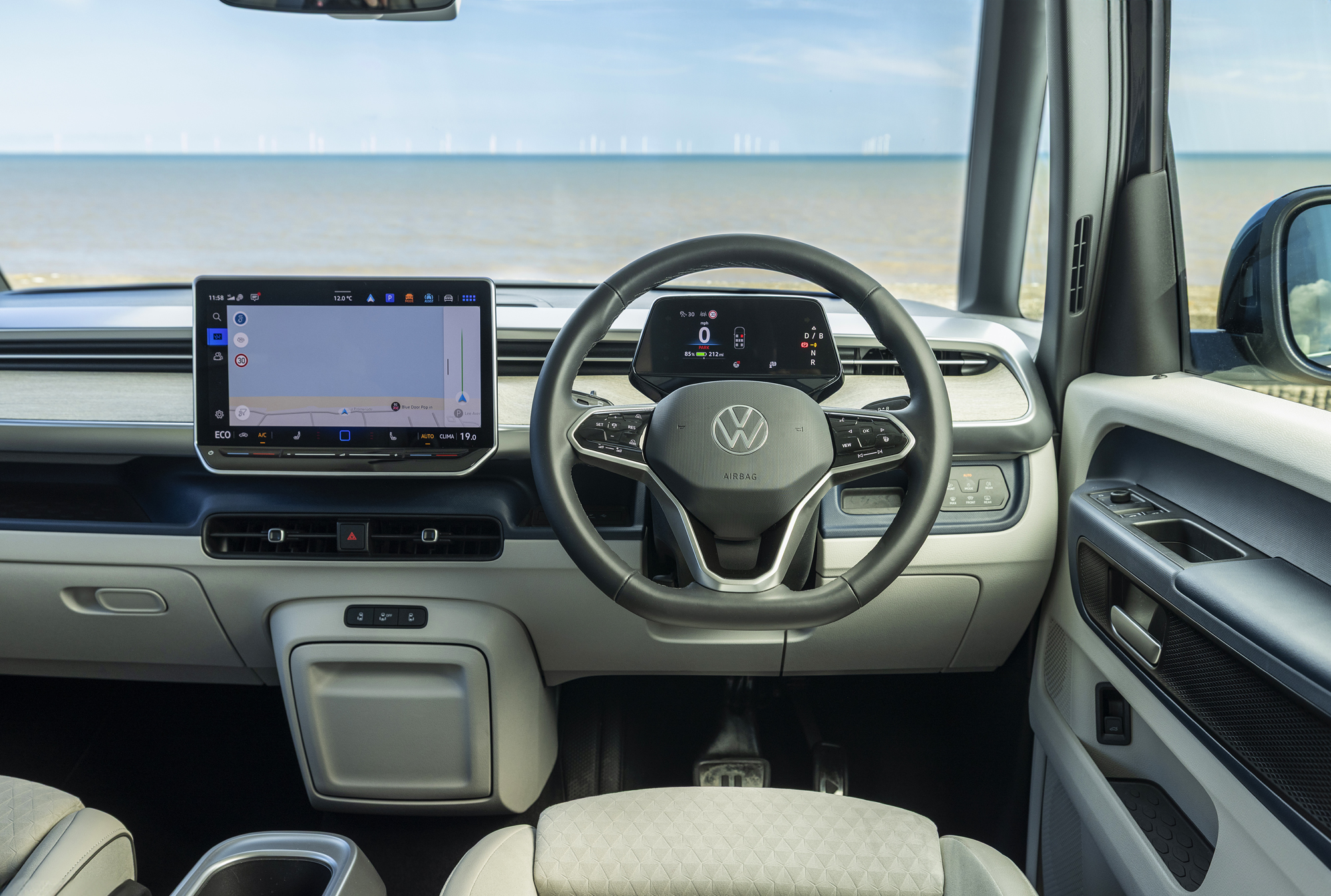
And the stowage box/armrest between the two front seats can be taken out of position – one of many examples of the thought given to the way the Buzz will be used when it’s parked, not just when it’s being driven. Then again, as Matt points out, VW’s combustion-engined Multivan is actually better than the Buzz when it comes to interior versatility, with its three independent middle-row seats.
It’s not fast, but you don’t find yourself yearning for the extra potency of the GTX version. ATJ notes: ‘Performance is more than adequate and it handles far better than it has any right to. The low-speed ride can be a little severe at times, but it feels more settled as a longer, heavier LWB than the SWB.’ On a rapid charger you should expect it to take 30 minutes to get from five to 80 per cent full. Note that it’s a much smaller battery than the Volvo and Kia, with a shorter range.
More than any of the other cars here, this is very focused on the passengers. They’re comfortable, they get a get view out, they’ll see people smiling at them, and they’re well provided with USB slots, lights and vents. Disappointingly, though, the interior looks better than it feels. Ours is a £70k car, and yet some of the plastics feel ready to snap off in your hand.
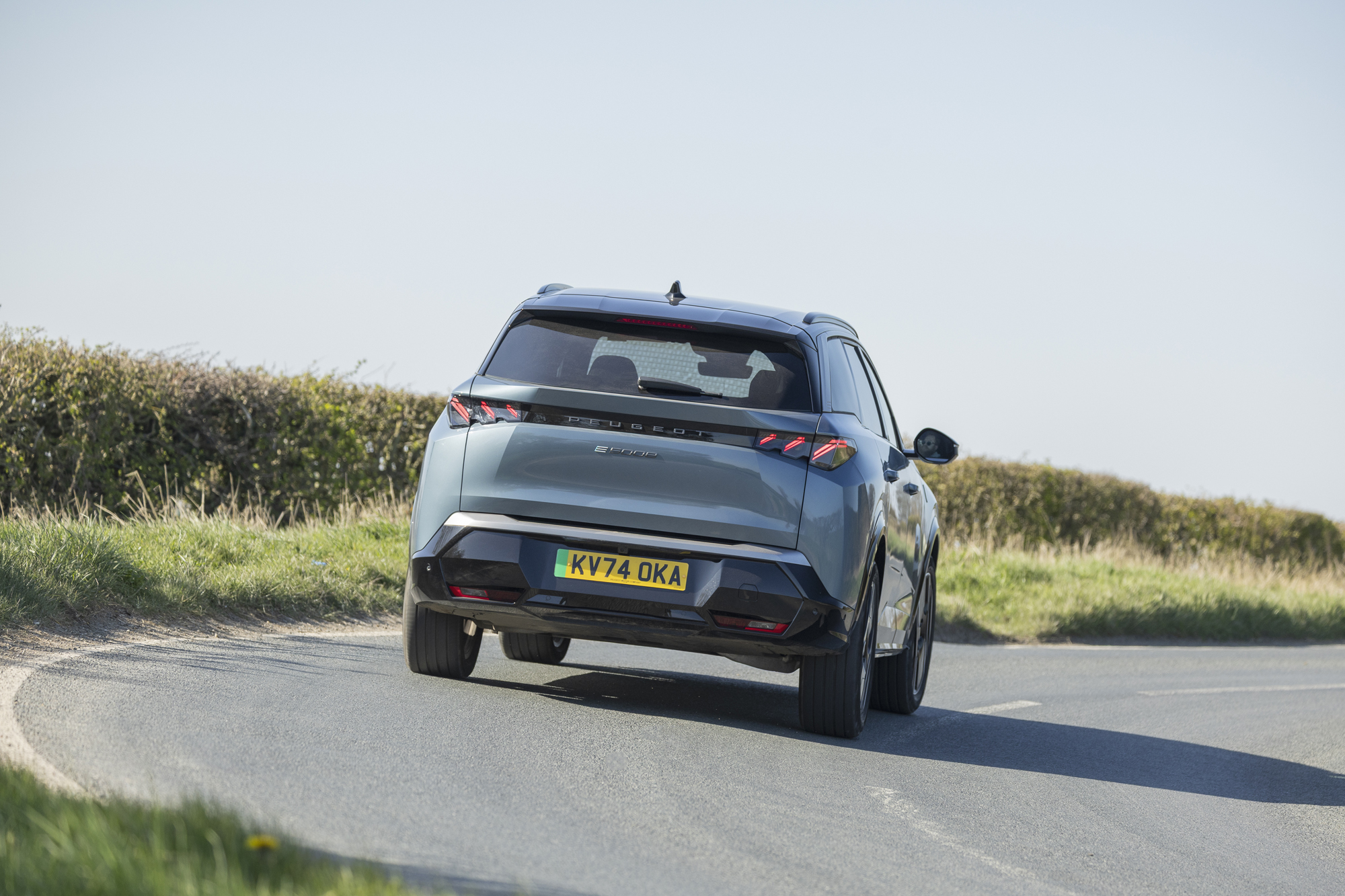
In contrast to the flamboyant, statement-making VW, the Peugeot is visually anonymous. This must be deliberate, given how good-looking various recent Peugeots have been, and will suit a lot of people just fine. If you just want to get on with living your life, rather than having to explain your choice of vehicle in every supermarket car park, the Peugeot is your friend.
Even with some extras fitted, consisting of a £700 heat pump and £600 worth of driving assistance features, our GT-spec test car is pretty keenly priced in this context, at below £54k.
It comes with Peugeot’s divisive i-Cockpit, here involving a 21-inch curved display, an oddly shaped steering wheel that blocks your view of the fancy digital instruments, and an embracing, cossetting vibe. You couldn’t get further from a van if you wanted to.
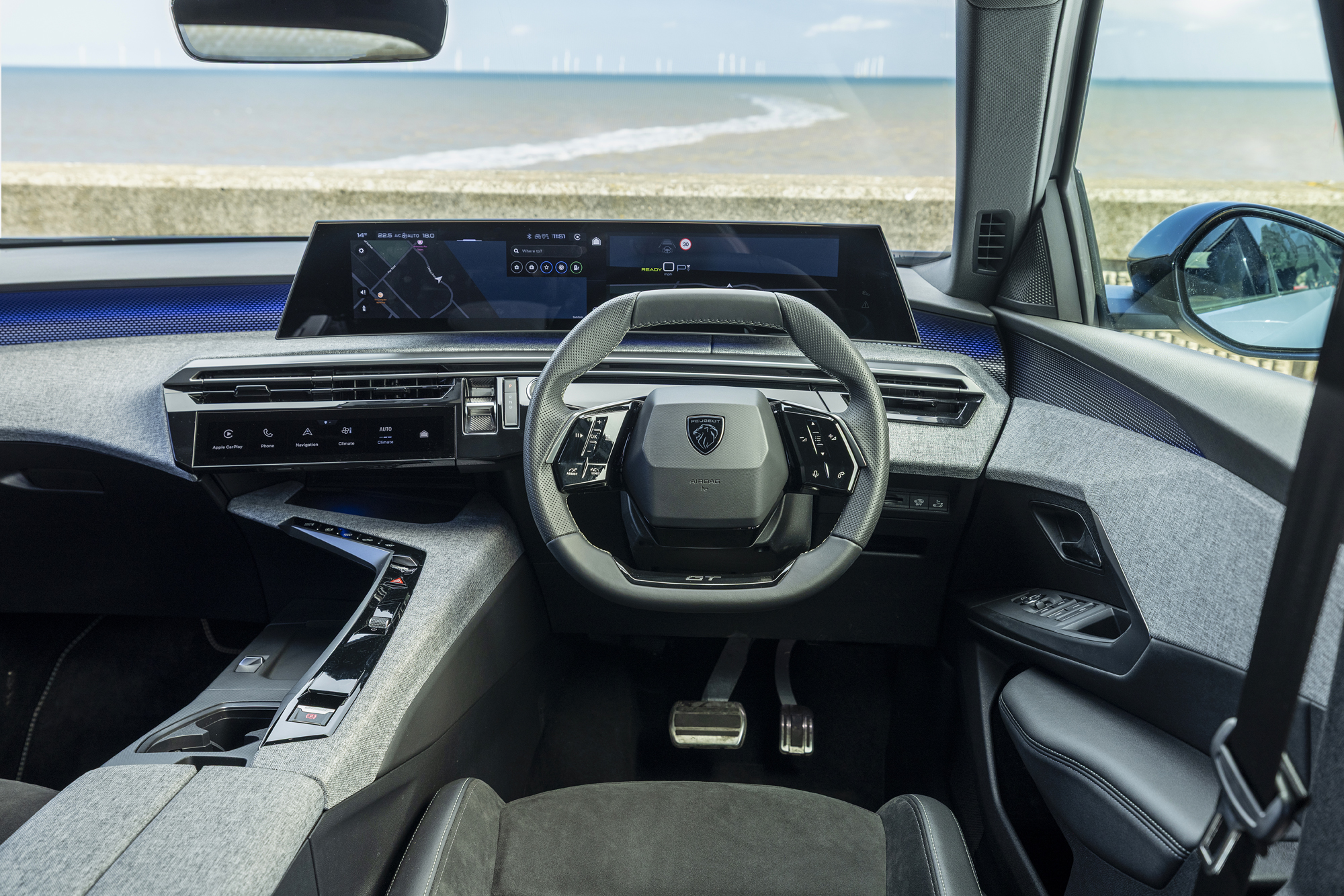
Like all these vehicles, it involves certain compromises. Here, the emphasis is on being relatively car-like, both to drive and in terms of its interior ambience. In much the same way as its body feels right-sized for everyday driving conditions, so does its performance feel appropriate to the world of school runs, shopping and weekend family trips. On paper, its figures look rather modest, and it’s certainly nothing like as rapid as the Kia. (A more powerful version is available, although it trims only 0.1sec off the 0-62mph time; its main aim is longer range.) That said, its efficiency figures during this test are the best of the quartet. On a rapid charger you’re looking at 30 minutes to get from 20 to 80 per cent full.
This generation of 5008 is bigger than its predecessor, but not huge in this company; 4791mm long. It has conventional suspension, a conventional layout and a conventional feel, as befits a car designed to accommodate a plug-in hybrid powertrain or a mild hybrid for customers not ready to go electric. Alan says: ‘The surprise of the test. It really didn’t disgrace itself on the road in much more expensive company. It’s also one of the comfier cars on test, if rather roly poly in the bends. A bit more pace would be nice, if not essential.’
The flip side of that car-like dynamism is its car-like interior space. It’s the smallest car on the outside and, unmiraculously, the smallest on the inside too. Your family may be happily nuclear, but if they’re bringing any friends along for the ride they’d better not be too tall.
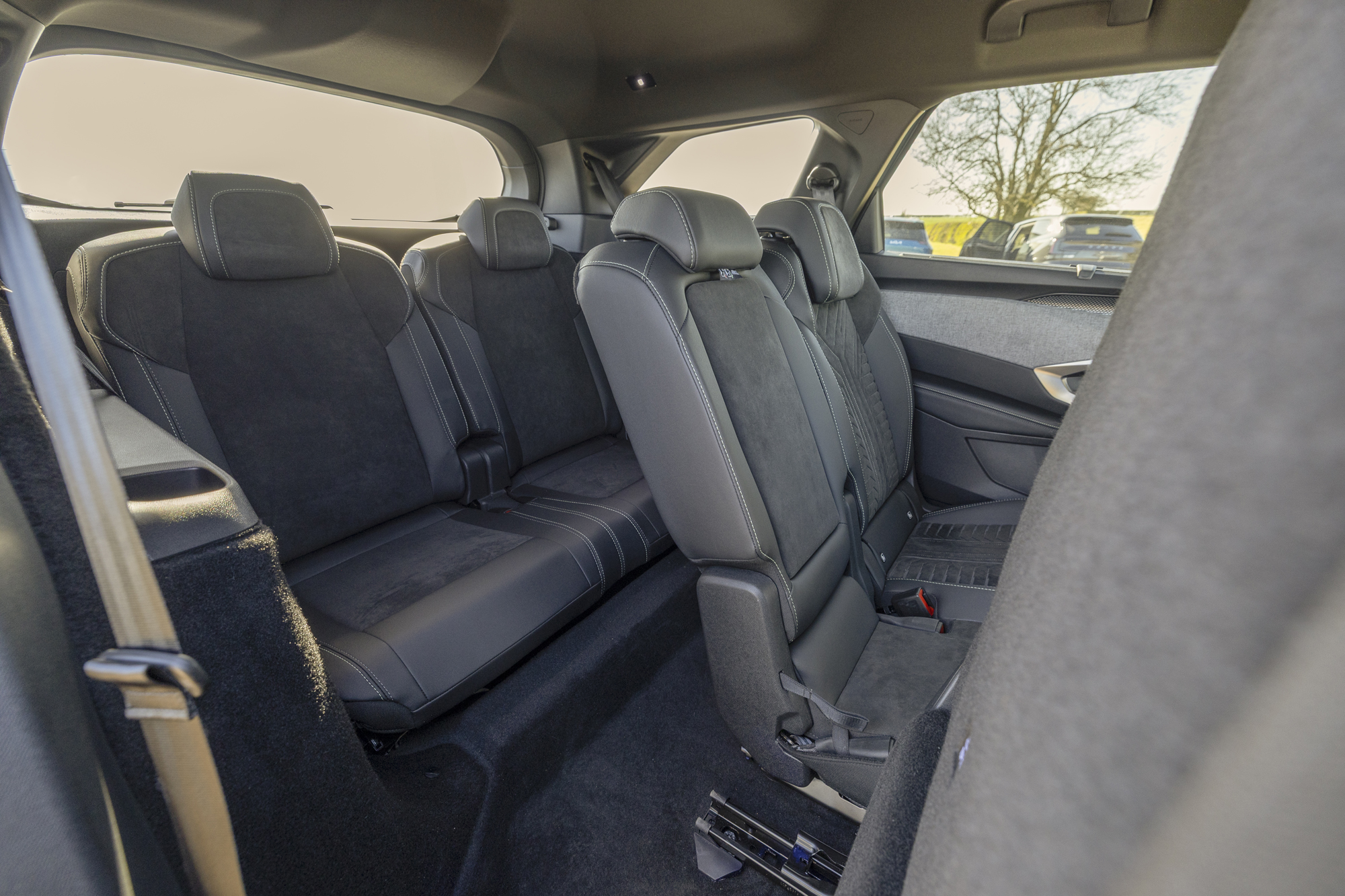
It’s also quite gloomy. There’s a £950 panoramic sunroof, but not on our car. There are also fancier seat options (although our manually adjusted seats are fine) but the option you might really want is not available: just a little more room for the third row. But then the price would go up, and so would the weight, and the charm of this oddly appealing French seven-seat EV would go down.
Having driven the Volvo up to Withernsea and been mildly impressed by its calm and comfort, that is put into context by my drive back south in the Peugeot. It’ss far from perfect, but almost as comfortable and relaxing, and a lot more fun – which, even when your focus is family-friendliness, must still count for something.
So, lots to argue about, but there’s an emerging consensus among our testers that this is a fine line-up if you’re in a position to choose an electric seven-seater in 2025. These are cars that overlap where it matters most, but which also offer significant differences to suit your preferences and requirements.
Some vehicle categories still seem to be problematic or unappealing to the makers of electric cars – where exactly are all the two-seat roadsters beyond the MG Cyberster, and why are there so few estate cars? But this impressive group of seven-seaters shows that tremendous progress is possible when the car makers put their minds to it.
A seven-seat EV is now a rational, versatile real-world choice. If only the prices would come down a bit – which they will, as less showy versions of the Volvo in particular become available, and as other manufacturers get involved, from the four corners of the Earth, trade wars permitting.
Verdict
BIG CARS — BIGGER HOPES?
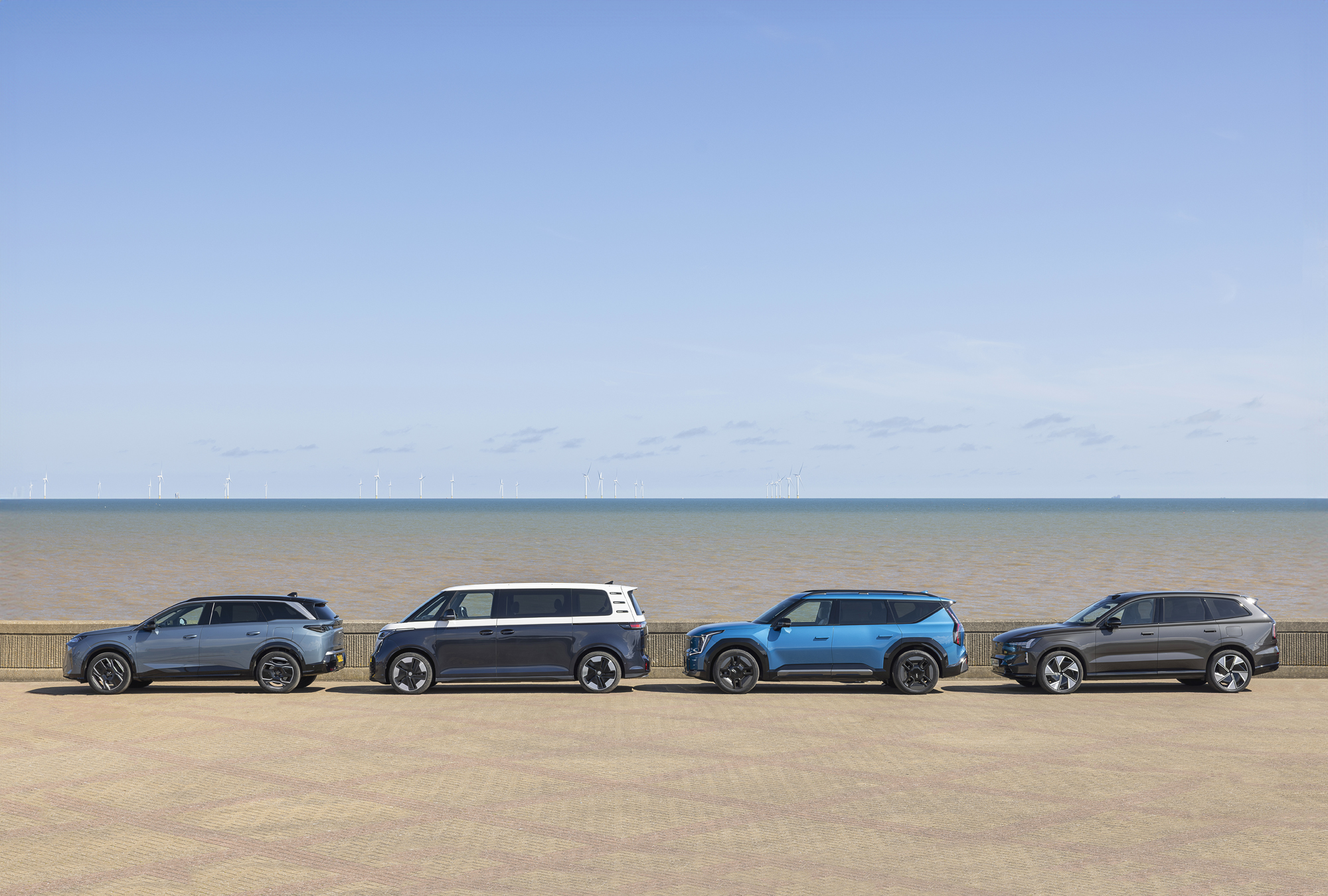
After a few miles driving any one of these cars it’s easy to forget what labels they wear. Being electric isn’t what defines them. Except on bladder-challenging long trips, battery range won’t be an issue. In fact, being electric is a boon for family transport, even putting aside the absence of emissions, as the quietness inherent in ditching combustion power improves the ambience no end, keeping the volume levels low and tetchiness in check.
Nor are they defined by their body styles. Two are clearly SUVs, one is a retro minibus and the Peugeot is an indeterminate blob. But they’re all essentially high-up cars, from the driving seat. And if you glance over your shoulder, they’re MPVs.
This is not damning with faint praise. Those of us old enough to remember the millennium-straddling golden age of the MPV – the era of various Espaces, the Galaxy/Alhambra/Sharan triumvirate, the exceptional Ford S-Max – will recall fondly the way they tended to drive rather better than they needed to. V6 engines were not unknown. And those MPVs that took the needs of your passengers seriously – giving them a good view, decent room, proper control over their temperature and entertainment – seemed like a triumph for civilisation.
Much of that attention to the passenger is evident in this 2025 quartet, but there are also unmistakable signs of compromise. The Peugeot’s third row is mostly for small kids. The Volvo’s isn’t great for a car of this size. And for all of them, you’ll struggle if all seven occupants want to bring luggage too.
The Volvo isn’t as special as we’d hoped, given our very positive experiences with the XC90, and the price seems like a mistake. It’s also rather heartening, in a round-about kind of way, to note that the most expensive car here is the one that we were all least impressed by. Yes, this is a high-spec version, but even in lower spec it’s still a lot of cash. Yet it has many merits. And let’s not lose sight of the fact that as recently as a couple of years ago the ‘electric seven-seater’ category mostly involved van-based cars, a couple of cramped Mercs and a weird Tesla. There’s been immense progress since then.
As well as the Hyundai Ioniq 9 – which CAR’s Jake Groves has driven and enjoyed on two continents – there will be more electric seven-seaters along soon, including some keenly priced Chinese alternatives, unless geopolitical strife sends us all retreating behind the sofa, firing up an Osmonds playlist on Spotify, yearning for simpler, happier times.
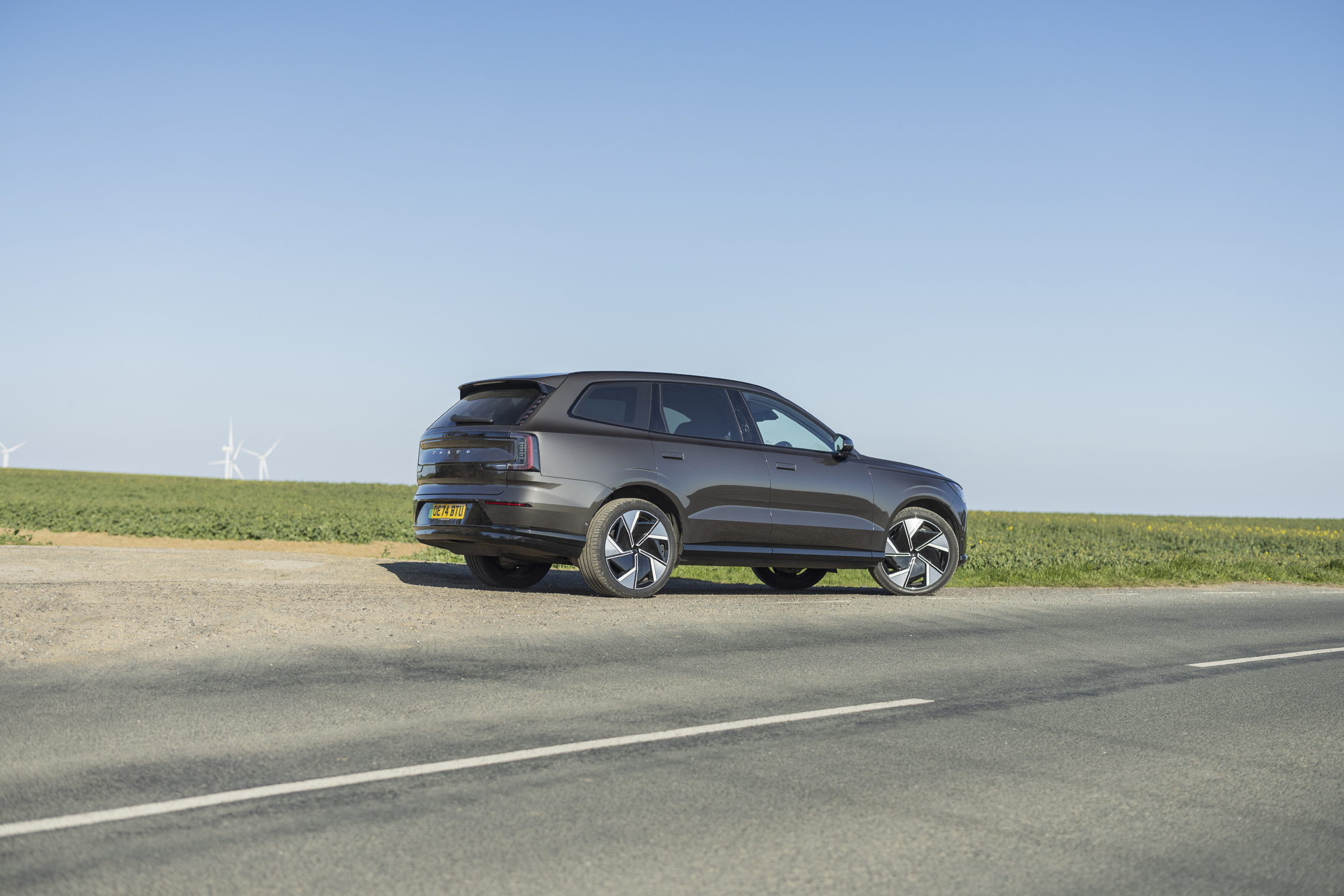
Facts & Figures | VOLVO EX90
What’s the line-up?
The EX90 range starts with the Single Motor RWD Plus version for £82,660, but our test car is the Twin Motor AWD in Ultra spec for £96,360. There’s also a higher-power Performance version, for a smidge under six figures, that takes power up from 402 to 510bhp and trims a second off the 0-62mph time.
Data
Price £96,360 (£96,360 as tested)
Powertrain 107kWh battery, twin e-motors, all-wheel drive
Performance 402bhp, 568Ib ft, 5.9sec 0-62mph, 112mph
Weight 2780kg
Efficiency 3.0 miles per kWh (official), 2.9 miles per kWh (tested), 375-mile range (official), 310-mile range (tested)
Length/width/height 5037/2113/1744mm
Boot capacity 324-1316 litres plus 46-litre frunk
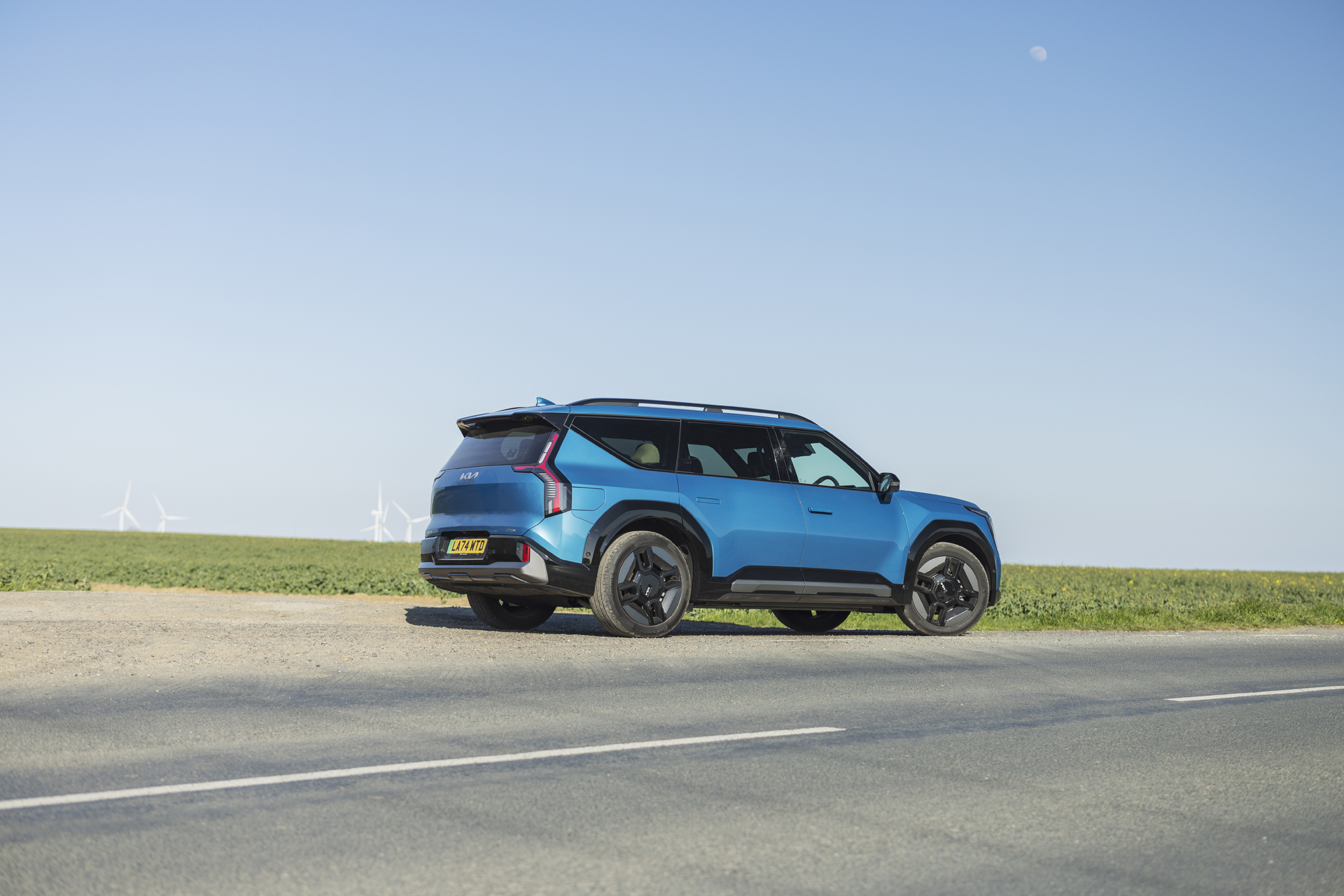
Facts & Figures | KIA EV9
What’s the line-up?
The EV9 is available with single or twin motors and rear- or all-wheel drive, in Air, GT-Line or GT-Line S trim, with six or seven seats. Pricing starts from £65,035, but by the time you get to our GT-Line S AWD seven-seat test car, which is close to the top of the line-up, you’re paying a further £11k.
Data
Price £76,035 (£76,035 as tested)
Powertrain 96kWh battery, twin e-motors, all-wheel drive
Performance 378bhp, 516Ib ft, 5.3sec 0-62mph, 124mph
Weight 2648kg
Efficiency 2.7 miles per kWh (official), 2.4 miles per kWh (tested), 313-mile range (official), 267-mile range (tested)
Length/width/height 5015/2263/1780mm
Boot capacity 333-2318 litres plus 52-litre frunk

Facts & Figures |Peugeot E-5008
What’s the line-up?
The range kicks off with the Allure. The GT has a little more of everything, including adaptive cruise control with stop-go. There’s a choice of battery sizes; ours is the smaller of the two, in GT trim. EV prices start at £48,660. There are also mild hybrid and plug-in versions.
Data
Price £52,350 (£53,650 as tested)
Powertrain 73kWh battery, e-motor, front-wheel drive
Performance 235bhp, 254Ib ft, 9.7sec 0-62mph, 106mph
Weight 2218kg
Efficiency 3.9 miles per kWh (official), 3.5 miles per kWh (tested), 310-mile range (official), 256-mile range (tested)
Length/width/height 4791/2108/1694mm
Boot capacity 348-2232 litres
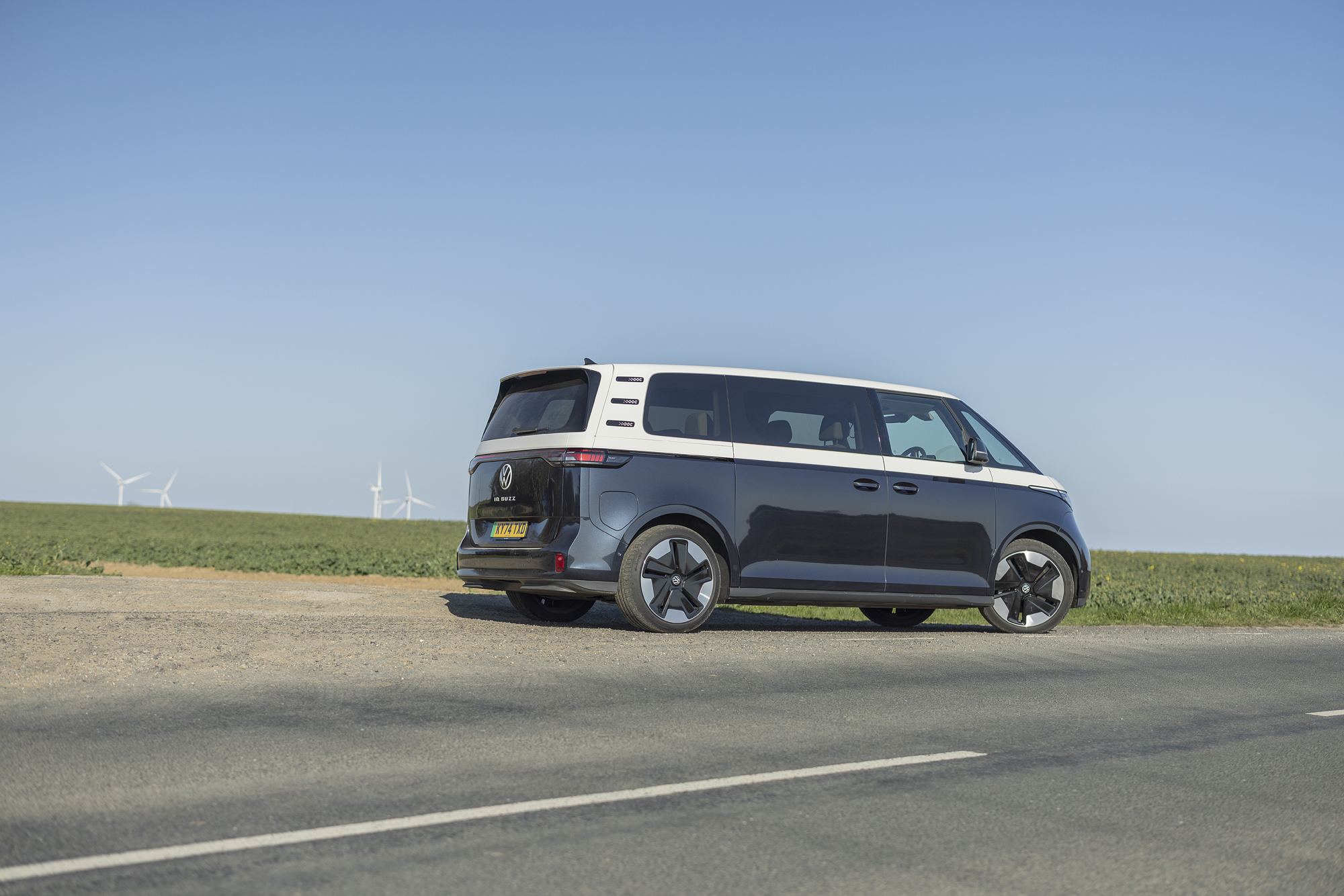
Facts & Figures |VW ID. BUZZ
What’s the line-up?
The seven-seaters start at £59,645 for the Life version. There are also GTX and Style versions. The seven-seater has only one battery size but the GTX version has a higher power output. Our Style test car has extras including a retractable towbar and this eye-catching paint.
Data
Price £64,345 (£71,615 as tested)
Powertrain 86kWh battery, e-motor, rear-wheel drive
Performance 282bhp, 413Ib ft, 7.9sec 0-62mph, 99mph
Weight 2795kg
Efficiency 3.01 miles per kWh (official), 2.9 miles per kWh (tested), 286-mile range (official), 249-mile range (tested)
Length/width/height 4962/2211/1937mm
Boot capacity 306-2469 litres

